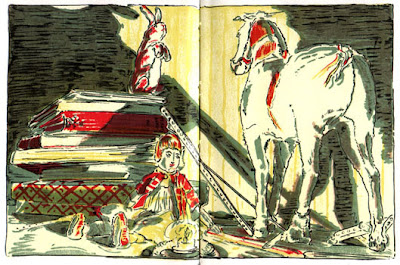Children’s book can be very charming, and some offer little lessons in life. The Velveteen Rabbit or How Toys Become Real is one of those. Published in 1922, it became an instant classic. I came upon it during my troubled teens, and fell in love with its message of being real, rather than worrying about how to please other people.
"What is REAL?" asked the Rabbit one day, when they were lying side by side near the nursery fender, before Nana came to tidy the room. "Does it mean having things that buzz inside you and a stick-out handle?"
"Real isn't how you are made," said the Skin Horse. "It's a thing that happens to you. When a child loves you for a long, long time, not just to play with, but REALLY loves you, then you become Real."
"Does it hurt?" asked the Rabbit.
"Sometimes," said the Skin Horse, for he was always truthful. "When you are Real you don't mind being hurt."
"Does it happen all at once, like being wound up," he asked, "or bit by bit?"
"It doesn't happen all at once," said the Skin Horse. "You become. It takes a long time. That's why it doesn't happen often to people who break easily, or have sharp edges, or who have to be carefully kept. Generally, by the time you are Real, most of your hair has been loved off, and your eyes drop out and you get loose in the joints and very shabby. But these things don't matter at all, because once you are Real you can't be ugly, except to people who don't understand."
What a great message. It becomes even truer when you get older, and your hair has been loved off, and your eyes get weaker, and your joints ache, and you start to look shabby. Because if you do become real, and it is a painful process, then there are people who love you for whom you are.
The story is about a stuffed rabbit that is given to a young boy one Christmas. He is relegated to the nursery, where he is forgotten. The other toys put on airs and say they are real. The rabbit's only friend is the skin horse. Eventually, the rabbit is thrust upon the boy, who comes to love him completely. Then one day the boy gets very sick, and all the toys he has been playing with have to be burned. As the rabbit is waiting for the bonfire, a fairy comes and turns him into a real rabbit, since he was so loved.
The author Margery Williams (Bianco) (1881-1944) was born in London. Her father was a barrister, and her mother a classical scholar. She was encouraged to read and use her imagination as a child by her father. That desire to read became a desire to write. Her beloved father died when she was seven, and the sadness of that loss is an undertone to her work. Sadness and loss are necessary for the continual processes of change and growth.
 |
| From Poor Cecco Image courtesy of Bangkok Rare Books. |
She went on to write numerous other children’s books. Most notable is Poor Cecco: The Wonderful Story of a Wonderful Wooden Dog Who Was the Jolliest Toy in the House Until He Went Out to Explore the World. Named for her son, Cecco (and arguably the precursor of Toy Story), it is the tale of a wooden dog and his friend, the stuffed puppy, who are on a quest for a lost friend. Published in 1925, and illustrated by Arthur Rackham, it remains unfairly obscure but is highly collectible by Rackham enthusiasts.
 |
| From Poor Cecco Image courtesy of Bangkok Rare Books |
The original edition of The Velveteen Rabbit was illustrated by Sir William Prior Nicholson (1872-1949), an author in his own right of children’s books, as well as an illustrator and painter. It has been adapted for the theater, as well as radio, television, and movies.
I recommend this book as a gift to everyone, especially children and teens, and dedicate this post to all of us who are continually searching for ourselves and are on the quest to be “real”.
***********
Except as noted, images courtesy of A Celebration of Women Writers
(Complete text included at this site.)
*******************************




No comments:
Post a Comment
NOTE: COMMENTS WITH LINKS WILL NOT BE POSTED!